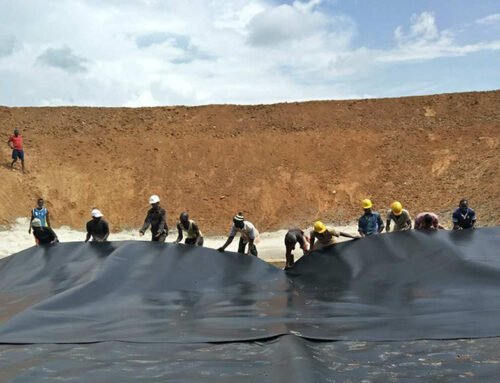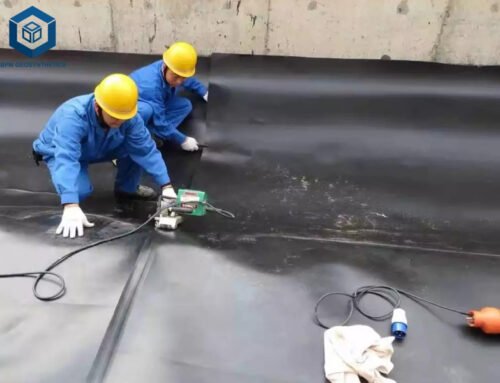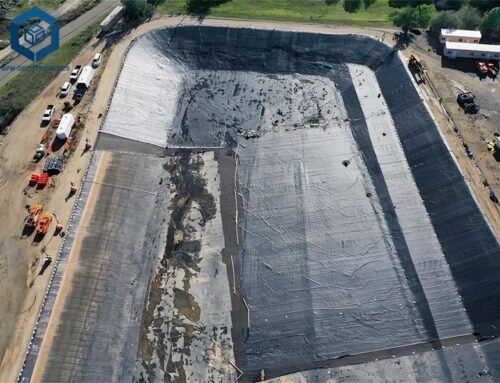HDPE pond liner thickness, also known as geomembrane pond liner thickness, is an important HDPE liner specifications affecting application scenarios and costs. The HDPE pond liner thickness can vary based on the specific requirements of the pond or containment application. HDPE liners are commonly used for lining ponds, reservoirs, landfills, and other containment structures to prevent leakage and protect the environment.
When choosing the appropriate of HDPE pond liner thickness for an aquaculture pond, there are several factors to consider. HDPE pond liner thickness will depend on the size of the pond, water depth, type of aquaculture, and any potential risks or stressors the liner may be exposed to. BPM Geomembrane is the leading geommembre pond liner manufacturer and supplier, we wholesale geomembrane pond liner at great factory price.
1. What Is HDPE Pond Liner?
HDPE pond liner is a popular choice for constructing and maintaining ponds and water features due to their toughness, flexibility, and resistance to chemicals and corrosion. These liners provide a reliable and impermeable barrier, preventing water seepage and ensuring the integrity of the pond.
HDPE pond liners stand out for their durability and longevity, making them an excellent investment. They offer high resistance to chemicals and corrosion, ensuring they can withstand the demands of various water conditions. Fusion welding is often used to join HDPE liners together, creating permanent seals that further enhance their effectiveness. However, it’s important to have experienced welders and proper equipment for a successful installation.
HDPE pond liners is their compatibility with aquatic life. They are safe for fish and plants, allowing for a healthy and thriving ecosystem within the pond.
HDPE pond liner is cost-effective, providing excellent value for their performance. They have a long service lifespan, surpassing many other polyethylene liners in terms of durability and reliability.
Key characteristics of HDPE pond liners include their composition of high-density polyethylene, a plastic known for its strength, flexibility, and resistance to chemicals and UV rays. These liners effectively prevent water seepage, retain water levels, and adapt to the shape of the pond due to their flexibility.
HDPE pond liners offer a winning combination of durability, flexibility, chemical resistance, and longevity. They are a trusted choice for creating and maintaining watertight ponds and water features, providing peace of mind and a thriving aquatic environment.
2. What Is HDPE Pond Liner Thickness?
HDPE pond liner thickness can vary depending on the specific requirements of the pond and its intended use. HDPE pond liners are available in a range of thicknesses to accommodate different applications and provide the necessary durability and protection.
HDPE pond liners come in thicknesses ranging from 20 mil (0.020 inches) to 60 mil (0.060 inches) or more. The choice of thickness depends on factors such as the size of the pond, the type of material it will contain, the potential for punctures or abrasions, and the overall longevity required.
For smaller ponds or applications where puncture risk is low, a thinner liner may be sufficient. Larger ponds or those with more demanding conditions may require thicker liners to ensure proper containment and longevity.
The most common HDPE liner size is 40 mil (0.040 inches or 1 mm), which offers a balance between strength, permeability, and cost. HDPE liners of this thickness are typically used for applications such as potable and reserve water storage, containment ponds, agricultural ponds, and dairy ponds.
3. Considerations to Choose Right Thickness for Fish Pond
Here are some steps to help you determine the right HDPE pond liner thickness.
3.1 Determine the type of aquaculturefor pond liner thickness
Different aquaculture systems have varying requirements for HDPE pond liner thickness. For example, if you plan to raise small fish in a relatively calm pond, a thinner geomembrane pond liner may be suitable. On the other hand, if you intend to cultivate larger or more aggressive species, a thicker HDPE pond liner may be necessary to withstand their behavior.
3.2 Evaluate the size and depth of the pond
Larger and deeper ponds tend to exert more pressure on the geomembrane pond liner due to the weight of the water. The HDPE pond liner thickness should be selected to handle the hydrostatic forces and prevent any potential leaks or damage. As a general rule, the deeper the pond, the thicker the HDPE geoemmbrane pond liner required.
3.3 Consider the environmental conditions
Before selecting a pond liner for aquaculture purposes, it is crucial to evaluate the environmental conditions of the area. Consider factors such as temperature fluctuations, sunlight exposure, soil composition, and the presence of any sharp or abrasive objects that may pose a risk of puncturing the liner. In harsh conditions, opting for a thicker HDPE pond liner is advisable to ensure enhanced durability and longevity. By assessing these environmental factors, you can make an informed decision to choose a pond liner that can withstand the specific challenges of the aquaculture environment, providing optimal protection for the aquatic ecosystem and ensuring long-term success in your aquaculture operations.
3.4 HDPE liner Manufacturer Recommendations
Consult with HDPE liner manufacturers or suppliers to understand their product specifications and recommendations. They can provide guidance on the appropriate thickness for HDPE pond liner based on the specific requirements of your aquaculture pond. Manufacturers often have charts or guidelines that correlate liner thickness with pond size and depth.
3.5 Pond Liner Expert Advicefor Thickness Selection
If you are unsure about the appropriate pond liner thickness for your aquaculture pond, it’s advisable to consult with aquaculture experts, pond designers, or experienced aquaculturists. They can offer HDPE liner thickness recommendations based on their practical experience and knowledge.
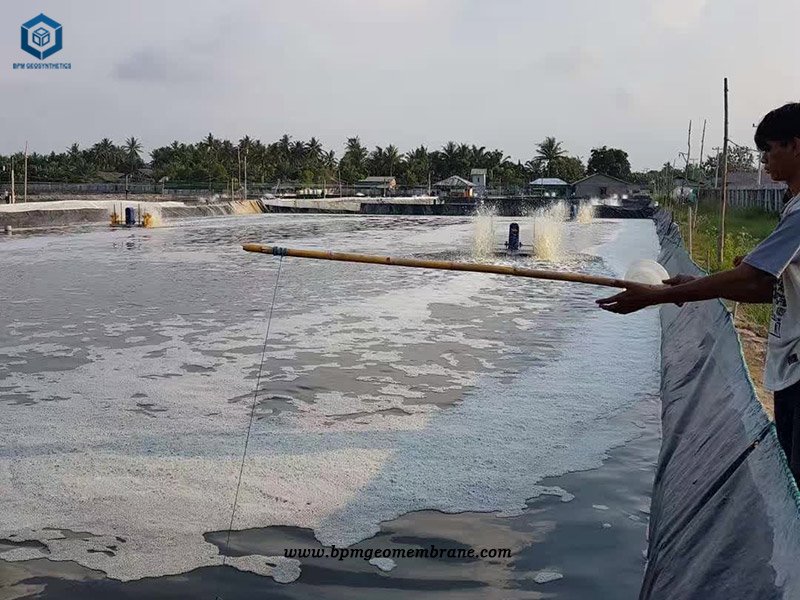
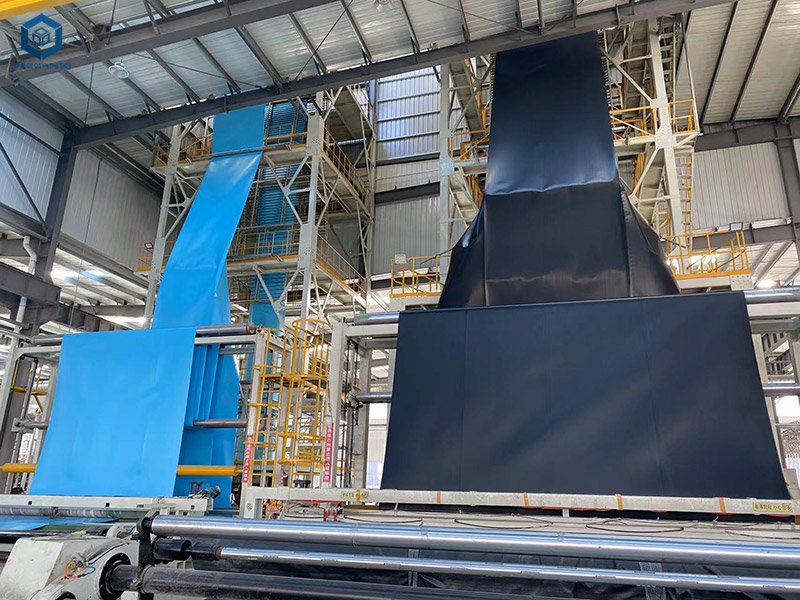
4. Which is The Best HDPE Pond Liner Thickness for Fish Ponds
HDPE pond liners come in various thicknesses, commonly measured in mils or millimeters. The appropriate thickness depends on factors such as pond size, substrate type, and project requirements. Typical thicknesses range from 20 mils (0.5 mm) to 120 mils (3 mm) or more.
Among the available options, a commonly used thickness for HDPE pond liners is 1mm, which is approximately equivalent to 40 mils. This thickness strikes a balance between strength, permeability, and cost, making it suitable for applications such as potable and reserve water in agricultural and dairy ponds. The 1mm HDPE pond liner provides the necessary durability and resistance while ensuring the containment and preservation of water resources.
It is important to consider the specific needs of your project and consult with experts to determine the most suitable HDPE pond liner thickness for your application. Proper selection will ensure the desired performance, longevity, and cost-effectiveness of the liner in maintaining the integrity and functionality of your pond.
The thickness of HDPE (High-Density Polyethylene) pond liner for aquaculture ponds depends on various factors, including the size of the pond, water depth, type of aquaculture, and potential risks or stressors the pond liner may encounter. Here are some general guidelines for selecting the appropriate thickness:
4.1 HDPE Pond liner thickness for Smaller Ponds
For smaller-scale aquaculture ponds with lower water volumes and less hydrostatic pressure, a thinner HDPE Pond Liner thickness can be sufficient. Thicknesses in the range of 0.5mm to 0.75mm (20mil to 30mil)are commonly used for these applications. However, it’s important to consider the specific requirements of your fish pond and consult with geomembrane liner experts to determine the ideal HDPE liner thickness.
4.2 Pond Liner Thickness for Larger Ponds
If you have a larger pond with higher water volumes and greater hydrostatic pressure, a thicker HDPE pond Liner is typically recommended. HDPE Liner Thicknesses of 0.75mm or more provide increased durability and resistance against potential damage from aggressive species, sharp objects, or harsh environmental conditions.
4.3 HDPE Liner Thickness Aggressive Species or High-Stress Conditions
If your aquaculture involves aggressive species or high-stress conditions that may pose a risk of puncturing or damaging the HDPE Pond Liner, it’s advisable to choose a thicker HDPE pond Liner. This will provide a higher level of protection and minimize the likelihood of leaks or failures.
5. What Is Difference Between 0.5mm and 0.75mm HDPE Pond liner Thickness
5.1 Benefits of 0.5mm HDPE Pond Liner
Cost-effective. Thinner HDPE pond Liner, such as 0.5mm or 20mil, are generally more affordable compared to HDPE pond liner thicker options. If you have budget constraints or a smaller-scale aquaculture operation, choosing a 0.5mm HDPE pond Liner can help reduce costs.
Flexibility and ease of installation. Thinner HDPE pond Liner are more flexible and easier to handle during installation. They can conform to the contours of the pond bed more easily, simplifying the installation process, especially for ponds with irregular shapes.
Suitable for low-pressure applications. If your aquaculture pond has a lower water volume, depth, or hydrostatic pressure, a 0.5mm HDPE pond Liner can provide sufficient protection against leaks and seepage.
5.2 Benefits of 0.75mm HDPE pond Liner
Increased durability. Thicker HDPE pond Liner, like 0.75mm or 30mil, offer enhanced durability and resistance to potential damage. They can withstand more aggressive species, sharp objects, and harsh environmental conditions, providing a higher level of protection for your aquaculture pond.
Suitable for larger-scale aquaculture. If you have a larger pond with higher water volumes and hydrostatic pressure, a 0.75mmHDPE pond Liner is better equipped to handle the increased stress and potential risks associated with larger-scale aquaculture operations.
Long-term reliability. Thicker HDPE pond Liner generally have a longer lifespan due to their increased thickness and resistance to wear and tear. Choosing a 0.75mm HDPE pond Liner can provide added peace of mind and minimize the need for frequent maintenance or replacement.
Enhanced resistance to punctures. Thicker HDPE pond Liner are less prone to punctures from sharp objects or the activities of aggressive species. This can help prevent leaks and maintain optimal water conditions for aquaculture.
Ultimately, the choice between a 0.5mm and 0.75mm HDPE pond Liner depends on the specific requirements of your aquaculture pond. If you have a smaller-scale operation with lower water volumes and a limited budget, a 0.5mmHDPE pond Liner may be suitable. However, if you require increased durability, resistance to damage, and are managing a larger-scale aquaculture system, a 0.75mm HDPE pond Liner would be a more appropriate choice.
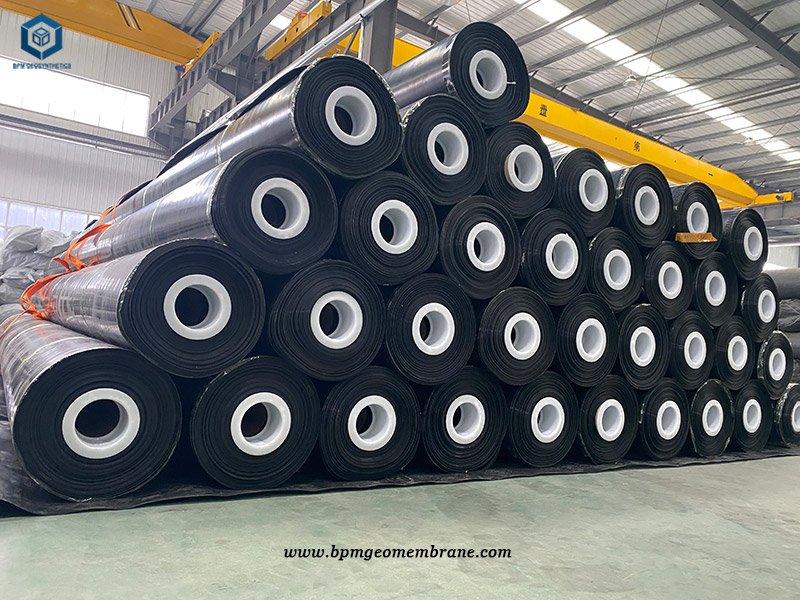
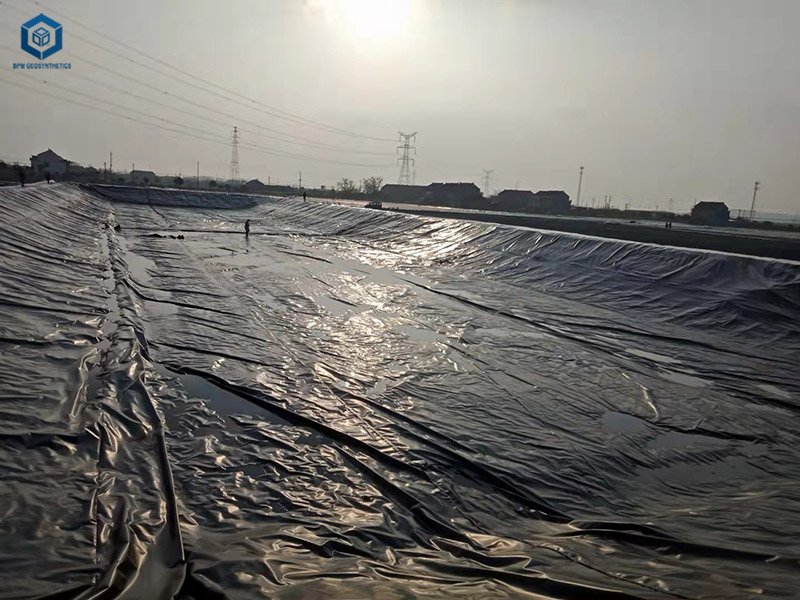
6. What Are The Benifits of HDPE Pond Liner For Fish Ponds?
HDPE geomembrane pond liner can have several beneficial effects on aquaculture ponds. Here are some key effects that HDPE HDPE pond Liner can have on aquaculture ponds:
Leak Prevention. One of the primary purposes of using an HDPEHDPE pond Liner in aquaculture ponds is to prevent leaks and seepage. HDPE pond Liner are highly impermeable, meaning they create a barrier that prevents water from seeping into or out of the pond. This helps maintain the desired water level and ensures water quality control, which is crucial for the health and growth of aquatic organisms.
Water Conservation. By effectively sealing the pond, HDPE pond Liner help conserve water. They minimize water loss through seepage, evaporation, or infiltration into the surrounding soil. This is particularly important in regions with limited water resources or areas where water scarcity is a concern.
Disease Prevention. HDPE pond Liner can act as a physical barrier to prevent the entry of pathogens and disease-causing organisms into the pond. They can help reduce the risk of contamination from external sources, such as polluted groundwater or nearby water bodies, thereby promoting a healthier environment for the aquaculture operation.
Improved Water Quality Management. The impermeability of HDPE pond Liner helps in better water quality management within the pond. It prevents the leaching of harmful substances from the soil or surrounding environment, such as heavy metals or chemicals, into the pond water. This allows for more precise control over water parameters such as temperature, pH, salinity, and dissolved oxygen, which are vital for the growth and well-being of aquatic organisms.
Easier Pond Maintenance. HDPE pond Liner provide a smooth and easy-to-clean surface, making pond maintenance more manageable. They minimize the accumulation of sediments, organic matter, or algae on the pond bottom, which simplifies cleaning and reduces the risk of oxygen depletion or water quality deterioration.
Longevity and Durability. HDPE pond Liner are known for their longevity and durability. They are resistant to degradation from UV exposure, chemicals, and biological agents. This ensures that the pond Liner can withstand the harsh conditions typically encountered in aquaculture ponds, maintaining its effectiveness and integrity over an extended period.
7. Summary
HDPE pond liner is the ideal and cost effective geosynthetic material for sih ponds. Choosing the appropriate HDPE pond liner thickness for fish pond liner depends on several factors, including the size of the pond, the type of soil, and the intended use of the pond, potential for sharp objects, and environmental factors, can influence the choice of HDPE liner thickness.
BPM Geomembrane is the leading HDPE pond liner manufacturer and supplier with 13+ years of industrial experiences. Any questions about HDPE liner specifications, please contact us.

